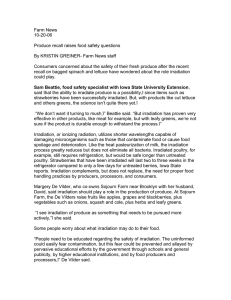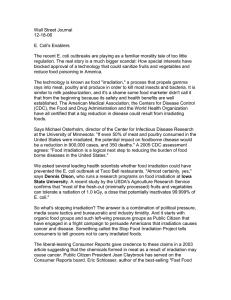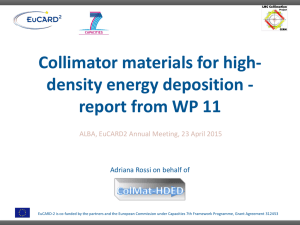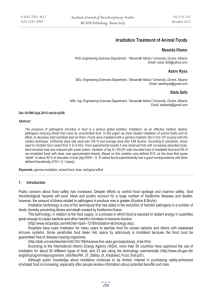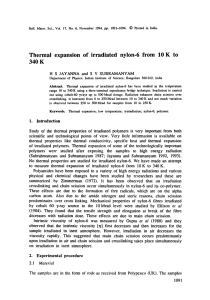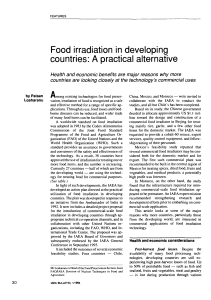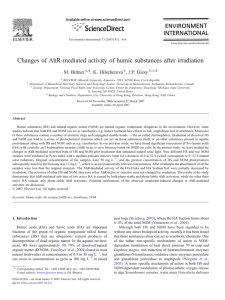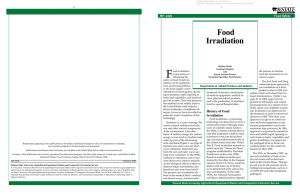Minneapolis Star Tribune, MN 01-09-07
advertisement
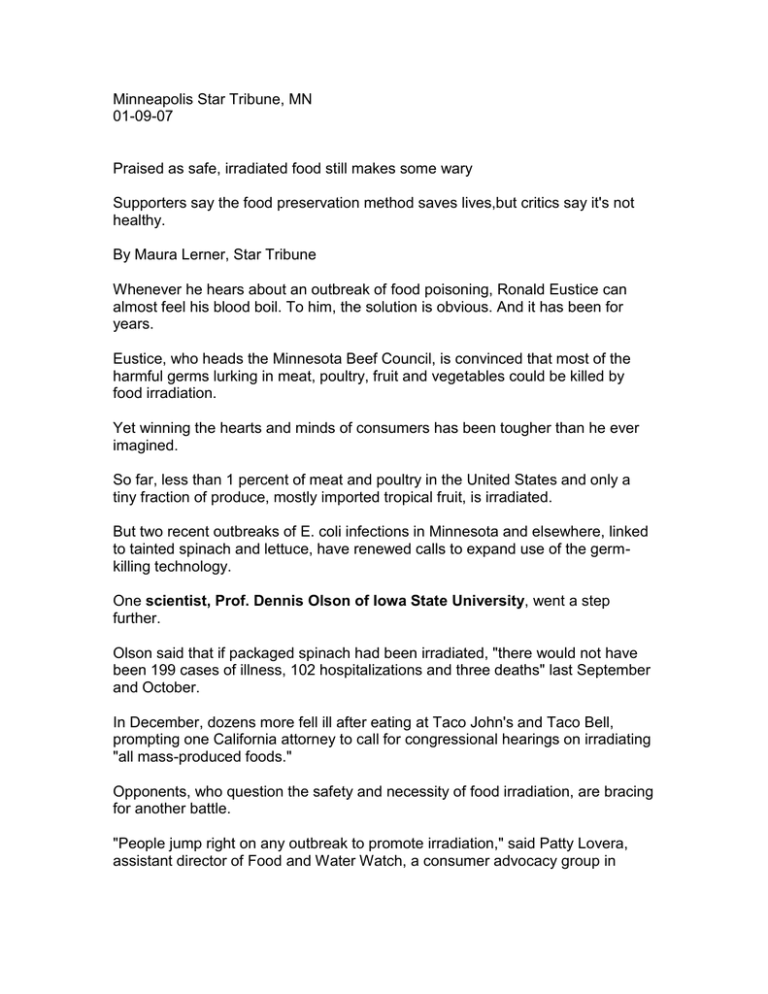
Minneapolis Star Tribune, MN 01-09-07 Praised as safe, irradiated food still makes some wary Supporters say the food preservation method saves lives,but critics say it's not healthy. By Maura Lerner, Star Tribune Whenever he hears about an outbreak of food poisoning, Ronald Eustice can almost feel his blood boil. To him, the solution is obvious. And it has been for years. Eustice, who heads the Minnesota Beef Council, is convinced that most of the harmful germs lurking in meat, poultry, fruit and vegetables could be killed by food irradiation. Yet winning the hearts and minds of consumers has been tougher than he ever imagined. So far, less than 1 percent of meat and poultry in the United States and only a tiny fraction of produce, mostly imported tropical fruit, is irradiated. But two recent outbreaks of E. coli infections in Minnesota and elsewhere, linked to tainted spinach and lettuce, have renewed calls to expand use of the germkilling technology. One scientist, Prof. Dennis Olson of Iowa State University, went a step further. Olson said that if packaged spinach had been irradiated, "there would not have been 199 cases of illness, 102 hospitalizations and three deaths" last September and October. In December, dozens more fell ill after eating at Taco John's and Taco Bell, prompting one California attorney to call for congressional hearings on irradiating "all mass-produced foods." Opponents, who question the safety and necessity of food irradiation, are bracing for another battle. "People jump right on any outbreak to promote irradiation," said Patty Lovera, assistant director of Food and Water Watch, a consumer advocacy group in Washington, D.C. "We think that would be an unfortunate result of the increased attention on food safety problems." Supporters like to compare food irradiation to pasteurization, which transformed milk safety in the 1900s. Irradiation uses electromagnetic waves to kill germs and parasites that may contaminate food. But the food does not become radioactive, as many people seem to think, says Michael Osterholm, the nationally known food safety and infectious disease expert at the University of Minnesota. It's what NASA uses to sterilize astronauts' meals, he said, and is also widely used to decontaminate spices. The big advantage, Osterholm says, is as a weapon against disease: It could prevent hundreds of thousands of cases of food-borne illness every year, and save hundreds of lives. Opponents cite problems But opponents say that irradiation can harm food by killing nutrients and, in some circumstances, generate cancer-causing chemicals. They also argue that there are other ways to protect the food supply, such as better sanitation and inspections. "I don't think irradiation is a solution," said Dr. David Wallinga, director of the food and health program at the St. Paul-based Institute for Agriculture and Trade Policy. "It's at best a Band-Aid on a much bigger problem." Osterholm dismisses the critics as scaremongers, and says there's no scientific evidence to back up their fears. "They are a major reason that people are still dying in this country from food-borne disease," he said. Uphill battle to win converts But even supporters acknowledge that it's been an uphill battle to win converts. "The one thing that's holding this up is consumer acceptance," says Osterholm. Eustice, who has been preaching the gospel of irradiation for 10 years, can count only a few victories for his side. Thanks to his organization, a beef industry trade group, Minnesota became the first state to introduce irradiated beef in the United States in 2000. And several Minnesota companies continue to sell it, including Simek's in St. Paul Park; Schwan Food Co. in Marshall, and Schwan's supplier, Huisken Meat Co. in Sauk Rapids. But an attempt to feed irradiated beef to schoolchildren, under a government school lunch program, collapsed before the first burger was served because of local opposition in 2003. "People trust the safety of our food supply, and their memories are very short," Eustice said. "Unfortunately, it's going to take more illness and more death." If more irradiated fruit and vegetables arrive anytime soon, Eustice says, they're likely to come from overseas. A number of countries in Latin America, Asia and elsewhere are building irradiation facilities, primarily to disinfect produce so it can pass U.S. inspection. As it turns out, irradiation also kills fruit flies. To Eustice, that's the ultimate irony. "One of these days we may be in a situation where certain produce imported from countries like Mexico, Thailand and India may be safer than that which is produced here in the USA," he said. "Because it is irradiated." Maura Lerner • 612-673-7384 • mlerner@startribune.com
